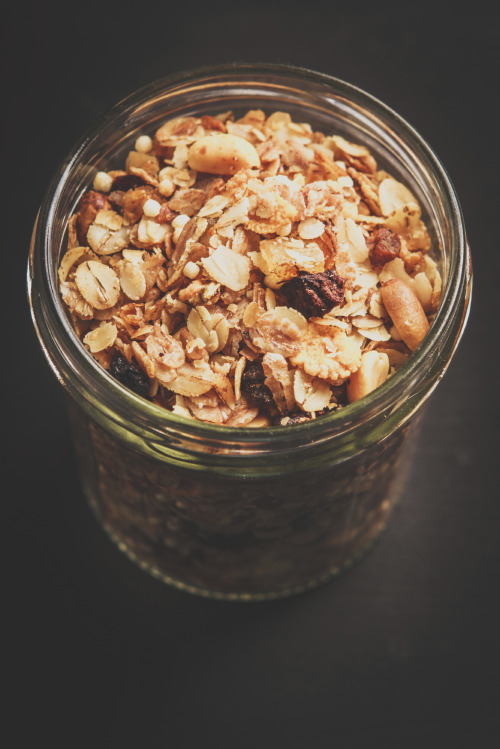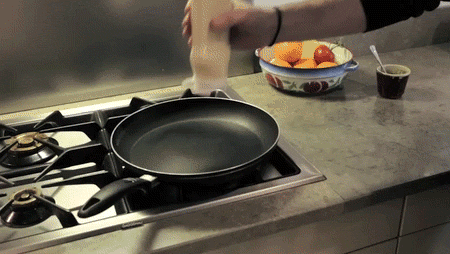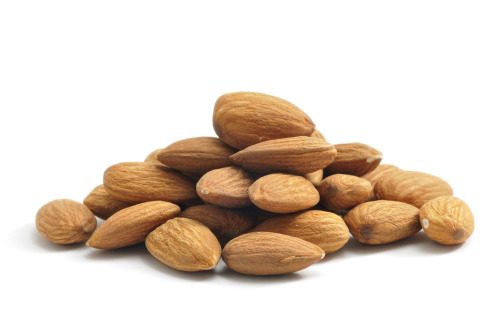Wake up and smell
the coffee. Err...maybe, not. Who wants to start a new day with the
depressing possibility that the first drink you chug down may have
coffee-flavoured mud, starch or worse? A good ol' cuppa tea, then? What
if it has coal tar dye? You'll end up with lung or skin cancer. Ouch.
Pour out some apple juice. And puke your way to nirvana? It may just
have fungi patulin. How about a glass of ice-cold milk? Brace for a jolt
of deadly chemicals: antibiotic gentamicin, pumped indiscriminately
into cows, that will give you hard-to-treat infections; pesticide boric
acid that kills cockroaches and gives humans lead poisoning;
preservative formalin that can change your kidneys forever. So just
drink some water. But, first, pray that there's no bromate lurking in
it, to turn on your cancer genes.
Wolf of food street
With
the great instant noodle scare in the last few days, a fear psychosis
has gripped the nation. Every food on your plate is suspect: all the
items above have been recorded, reported or recalled by the Food Safety
and Standards Authority of India (FSSAI) ever since it came into being
in 2011. Harmful, dangerous, alien chemicals and non-foods are secretly
invading our lives, as a culture of infectious greed grips much of our
food chain: from farm to fork. At any given point, someone somewhere
along multiple touch points on that chain is trying to get rich by
altering, substituting, passing off or turning a blind eye to
unacceptable processes and materials. A terrible human and economic cost
looms large.
India is the world's worst food violator, reports
global food source monitoring company, Food Sentry. China follows
closely and the US is also one of the top 10. Most violated foods are
raw or minimally processed, including seafood, vegetables, fruits,
spices, dairy products, meats and grains. More than a third of food
frauds take place due to "excessive or illegal pesticides", pathogen
contamination and filth or insanitary conditions. "What's worrying is
the mislabelling on products of packaged foods," says Dr Suneeta
Chandorkar, Assistant Professor, Department of Food and Nutrition,
Faculty of Family and Community Services, MS University, Vadodara. "They
all say 'healthy' but tests have shown they are hardly that."
A very serious issue
A
"really very serious issue," as Union Health Minister J.P. Nadda
admitted in the budget session of Parliament in March. One out of fi ve
food samples fails quality test in India, reports the FSSAI Annual
Public Laboratory Testing Report, 2014-15. Out of 49,290 food samples
tested by the apex food body, 8,469 did not clear the laboratory tests
for food safety, bringing the rate of food fraud rate-adulteration,
contamination or mislabelling to a gasp-worthy 20 per cent. It was just
13 per cent in 2011-12. Yet the number of convictions for economically
motivated adulteration of food has come down from 3,845 in 2013-14 to
just 1,256 now.
Data collated by FSSAI from across the country
shows a steep rise in food fraud, with five states-UP, Maharashtra,
Madhya Pradesh, Kerala and Andhra Pradesh-accounting for more than 90
per cent of the total penalties levied. It's a very serious issue
because the true extent of the impact of adulterated food on human
health remains unknown. Food-borne dis-eases encompass a wide spectrum
of illnesses and are a growing public health problem worldwide, says the
World Health Organization (WHO) in its World Health Day 2015 report,
'How Safe Is Your Food'. Gastrointestinal, neurological, gynaecological,
immunological to multi-organ failure and even cancer. They can manifest
immediately with microbial pathogens or parasites, as in the case of
about 400,000 children below age five whodie of diarrhoea every year in
India. Or they can be chemical contaminants that accumulate in the body
and snuff out life slowly over time. The full extent of the burden and
cost of unsafe food is currently unknown, says the WHO, but its impact
on global health, trade and development is considered to be immense.
Who stole my Maggi?
Everybody
is singing a requiem to a ubiquitous yellow packet: mothers tired of
cooking for fussy children, students living away from home,
professionals too busy to cook, frugal retirees skittish about the purse
strings. Iconic brand Maggi, that asked for "just two minutes of your
time" for the past 33 years, has been declared "hazardous for human
consumption" by the FSSAI. It will not be made, processed, distributed,
sold or imported in the country. Although Swiss food giant Nestle India
has challenged the validity of the tests, 20 million packs worth Rs
1,000 crore are being recalled.
"Adulteration in our daily food
items has been proved time and again. But this is not just another case.
This is heavy metal, completely the next level," says Amit Khurana,
programme manager for food safety and toxins at the Centre for Science
and Environment. "I am unable to figure out how the lead came in Maggi
samples," says Chandorkar. Lead mostly comes from industrial effluents.
In India, crops and vegetables draw it from water. "It could have been
from a machine part gone wrong," she adds. To Narpinder Singh, president
of the Association of Food Scientists and Technologists, India,
however, adulteration from MNCs selling processed and packaged food is
just the tip of the iceberg. "What about our street vendors? There's no
monitoring over what they use," he says. The investigation over Maggi
noodles will pinpoint the guilty parties. But the scandal lifts the lid
off the casserole of India's real food story.
Sadism for breakfast
Nothing
seems more wholesome than breaking an egg into a frying pan for
breakfast. But do you wish to die of green diarrhoea from salmonella
poisoning? Random sampling shows 5-7 per cent eggs across India are
contaminated with the deadly bacteria. According to a 2012 research from
the Indian Veterinary Research Institute, most of these happen from
inhumane conditions, overcrowded cages, saturation with excrement and
waste streams. That's not all, across India exists the widespread
practice, though legally banned, of starving hens for profit. By
depriving egg-laying hens of food for 14 days, poultry-owners can save
expenses on feed and manipulate the egg-laying cycle. The suffering and
drastic weight loss dramatically increases the risk of a hen laying
salmonella-infected eggs.
Consider bread: if you thought good
bread lies at the heart of a blissful day, think again. The flour used
to make your daily bread, roti, chapati or parantha is also bleached,
contains as many as 25 different chemicals, including fumigants, apart
from mud, dust, insects and fungus. The result? Liver problems to
diabetes to damaged kidneys and nervous system. What's more, scientists
are sounding alarm over mycotoxin contamination in wheat, oats, maize
and barley, from bad agricultural practice. Ask Sakshi Mishra,
researcher with the Indian Institute of Toxicology Research, Lucknow,
who detected the poisonous fungi in 30 per cent samples, out of which
seven per cent exceeded the limit. A report published in the Journal of
the Science of Food and Agriculture last year found excessive levels in
Karnataka, Andhra Pradesh and Tamil Nadu. The fungi can cause a range of
disorders: jaundice to gastrointestinal bleeding.
Surely, one can
bite into fruits, for all the goodness of antioxidants, healthful
nutrients and fibre? But there too unscrupulous traders can beat you at
it. In April, 12,000 kg mangoes that had been ripened artificially with
the chemical ethephon, a plant growth regulator classified as
"dangerous" and "corrosive", had to be destroyed in Goa by food safety
officials. The fruit vendor, looking to make a quick buck, was quite
aware of what he was doing: he had donned plastic gloves to dip the
mangoes in the chemical.
Food detectives at war
It's a
neatly-wrapped packet of suspicion and doubt. Someone thrusts it in
through a square hole in the wall. Instantly weighed, checked and
barcoded, it begins its journey through the food testing lab in Barasat,
on the outskirts of Kolkata: clean-air showers, inoculation room for
sterility, chromatography room to check nutrition, spectrophotometer
room to verify colouring. Scientists in white coats and blue overalls
crouch in concentrated silence over gleaming white machines that hum,
whir and spew out data: heavy metals, pesticides, antibiotics,
carcinogens. They are the behind-the-scenes food detectives of Edward
Food Research and Analysis Centre (EFRAC), a top-line private lab with
12 accreditations from the Government of India and the United States
Food and Drug Administration (USFDA). And they stand by their science:
none of the 800 samples of Maggi they tested in the last one month has
unacceptable levels of harmful chemicals. "My machines are 21 CFR Part
11 compliant," says CEO and microbiologist Balwinder Bajwa, "the USFDA's
new enforcement for food security. I am not certifying Maggi. I am
certifying my results."
That has put yet another question mark on
the fate of our food: why have some labs found lead and MSG in Maggi
while others did not? Can we trust our labs? Lead contamination in
several samples was established by many laboratories in various parts of
the country. But some states have given it a clean chit. About 11
states have already banned Maggi and as many have started testing it
individually. Industry veteran and former CEO of Britannia, Sunil Alagh,
has lambasted the food testing process in the country as "disastrous",
blaming the government for destroying a brand. "I agree with @sunilalagh
about destroying Maggi brand without proper evidence. I smell a
sinister ploy and Nestle must get to bottom of it," Kiran Mazumdar Shaw,
chief of Biocon, has tweeted.
"The blame game doesn't help what
India faces," says consumer policy expert Bejon Misra. We have great
choice and access to food today. Our supermarkets overflow with
packaged, processed foods from all over the world. But what we believe
we eat is often at odds with what we actually consume. "So severe has
been thepublic outrage that it has ushered in a much-needed groundswell
for a firmer governance of our food chain," he says. "For the first
time, the government has lodged a case against a food giant with the
National Consumer Disputes Redressal Commission on behalf of consumers."
Many companies don't conduct due diligence on their supply
chains. And then get away by paying a small penalty. "India is finally
moving towards enforcement of food recall regulations. And it should be
respected," adds Mishra. Companies with unsafe products will now have to
inform consumers about contaminants, health hazards, outlets where it
was found and a contact number for queries.
The FSSAI is in no
mood to relent. Formed under the Food Safety and Standards Act of 2006,
and effective since 2011, the fledgling body is determined to net both
whales and minnows to ensure food safety and standards. In the last few
years, it has dragged food and beverage majors-Heinz to Marico,
Kellogg's to Britannia, Cadbury to Hindustan Unilever, Parle to
Amway-for a range of reasons: misleading ads to unsafe use or overuse of
chemicals. In May this year, theFSSAI ordered recall of energy drinks
Monster, Tzinga and Cloud 9, arguing that the drinks use "irrational
combination" of ginseng and caffeine. In January 2015, the FSSAI started
a nationwide survey and testing of everyday foods-dairy, pulses, edible
oil, poultry, fruits and vegetable-to frame policy interventions
against adulteration and contamination.
New methods, new dangers
Watch
out for the new kid on the block. It has come straight from the Shaanxi
province of China and flooded the markets of Kerala. At a glance it
looks like normal rice: the reason why no one bothered to look too
closely. It's smooth, slippery, milky white with every single grain
formed perfectly. If you soak it in water, it will float. If you boil
it, it will turn into a hard sticky mass, like wax paper. If you put
fire to it, it will light up instantly. And if you eat it, you will land
up in hospital with severe stomach condition-exactly what happened in
Kerala. Made of potatoes, sweet potatoes and polymer at a paltry
production cost, it's the latest food fraud in the country: fake plastic
rice. The packets were confiscated once people started falling ill
after buying the rice.
Adulteration methods are increasingly more
sophisticated. Detection systems have to be more alert, say experts.
Simple adulteration of fruit juices by addition of water, or stones in
rice are now giving way to deadly pesticides, non-permitted synthetic
colours, slapdash use of antibiotics and DNA-altering carcinogens. Under
the Prevention of Food Adulteration Act of India, 1954, eight synthetic
colours were mentioned; the list has now become long, with lethal
synthetic colouring-say, metanil yellow to make turmeric, spices and
pulses look fresh or red lead oxide to add shine to chilli powder,
coloured sweets and pickles-taking its toll on the human body on
prolonged use. "That's because of the tardy implementation of
regulations and lack of stringent quality control exercised by the
manufacturers of processed foods," says Ramesh V. Bhat, international
food safety consultant and former head of the food toxicology division
at the National Institute of Nutrition, Hyderabad. "Most of the state
government food inspectors and lab analysts spend their time in courts,
chasing pending cases," he says.
The infrastructure to check
adulteration in the states remains woefully shabby. Take Uttar Pradesh,
the biggest state in the country. It has just five public analyst labs:
in Lucknow, Agra, Varanasi, Gorakhpur and Jhansi. They all date back to
the 1980s and do not have the wherewithal to execute complex cases that
need modern technology or adequate manpower. Two labs, in Gorakhpur and
Jhansi, are running without a public analyst officer. The rest share one
officer amongst themselves. About 430 posts of food inspectors are
lying vacant, while technical manpower stands at just 40 per cent. The
shortage tells its own story. Data from the Uttar Pradesh Food Safety
and Drug Administration (FSDA) shows that just 30 per cent of 43,512
food samples sent to these labs got tested in 2014-15. A public analyst
officer says on the condition of anonymity, "There is a rule that tests
must be completed within 14 days. But now even the simplest cases take
more than a month." Similarly in Rajasthan, about 73 food safety
officers, working in just six testing labs, are supposed to execute at
least 10 samples every month.
Wake up and smell the coffee
For
the average urban Indian, food accounts for 50 per cent of the
household budget. It's the biggest item of expenditure, reports the
Centre for Monitoring Indian Economy (2014). Cereals and pulses top the
list, followed by vegetables and fruits. Then come milk, meat, eggs,
fish and edible oils. Snacks account for four per cent, with just one
per cent being spent on noodles. The shock and anger over Maggi instant
noodles is worth just that much. Beneath that, there's a cauldron of
dangerous criminal activity that violates our rights to health and life
with appalling disregard: fish contaminated with ammonia and
formaldehyde, to preserve it just like dead bodies in a mortuary; farm
animals contaminated with antibiotics to make them grow faster and keep
them alive in the worst unsanitary conditions; fruits and vegetables
coloured with copper sulphates and injected with hormone oxytocin to
make them look fresh and inviting.
That's 49 per cent of the home
economy down the drain, as we live at a higher risk every day. Yet
there is no outrage, no controversy, not one complaint. Who is
responsible for what is happening to our food? "The consumer," says
Balvinder Bajwa, who witnesses, samples and quantifies in his lab every
day what goes into our plate. "We want everything cheap. And there is a
competition to pander to people like us. That leads to unfair trade
practices." Be willing to pay a higher price for your health, he says.
Insist ongetting your money's worth. Cut down the underhand operators.
Support more inspection, enforcement, criminal prosecution.
To
Narpinder Singh, it's the woefully low benchmarks we have as a nation
that gets in the way: "India does not have a minimum standard
requirement and database. We still use chemicals that were phased out in
the US from the 1960s onwards. Our referral labs also don't always have
state-of-the-art infrastructure and trained people. As a result, food
manufacturers set their own standards and write whatever they want to
write on the label," he explains. The solution to him is more control
over monitoring of food material, both local raw material and those
sourced from outside. "We need strict action on adulterers to set
examples."
"We have studied about 200 packaged food products and
found almost all of them either misreporting or under-reporting on their
labels," says Suneeta Chandorkar. To her, mislabelling is a big offence
because health is at stake: "We need stronger legislation and even
stronger monitoring to stop this. We should ensure more random tests by
accredited laboratories-both government and private-and the
manufacturers shouldn't be told which lab the sample is going to." To
Amit Khurana, consumers need to be more aware to protect themselves. "We
should demand more transparency," he says. That manufacturers should
list their contents loud and clear and the government should provide
stringent regulation to control and monitor such labelling on food
packs. "It is a consumer's right."
So take an interest in the
store you buy your food from. Check it out: is it clean? Is it checked
by food inspectors? Is the packaging intact? How about the sell-by date?
Is there a use-by date too? Talk to people. Keep an eye out: is anybody
falling sick after eating in a restaurant or buying from a shop? And
speak out. Make a noise. Not just against multinational food giants but
anyone who tries to decide for you what you should eat.






























Follow Us
Were this world an endless plain, and by sailing eastward we could for ever reach new distances